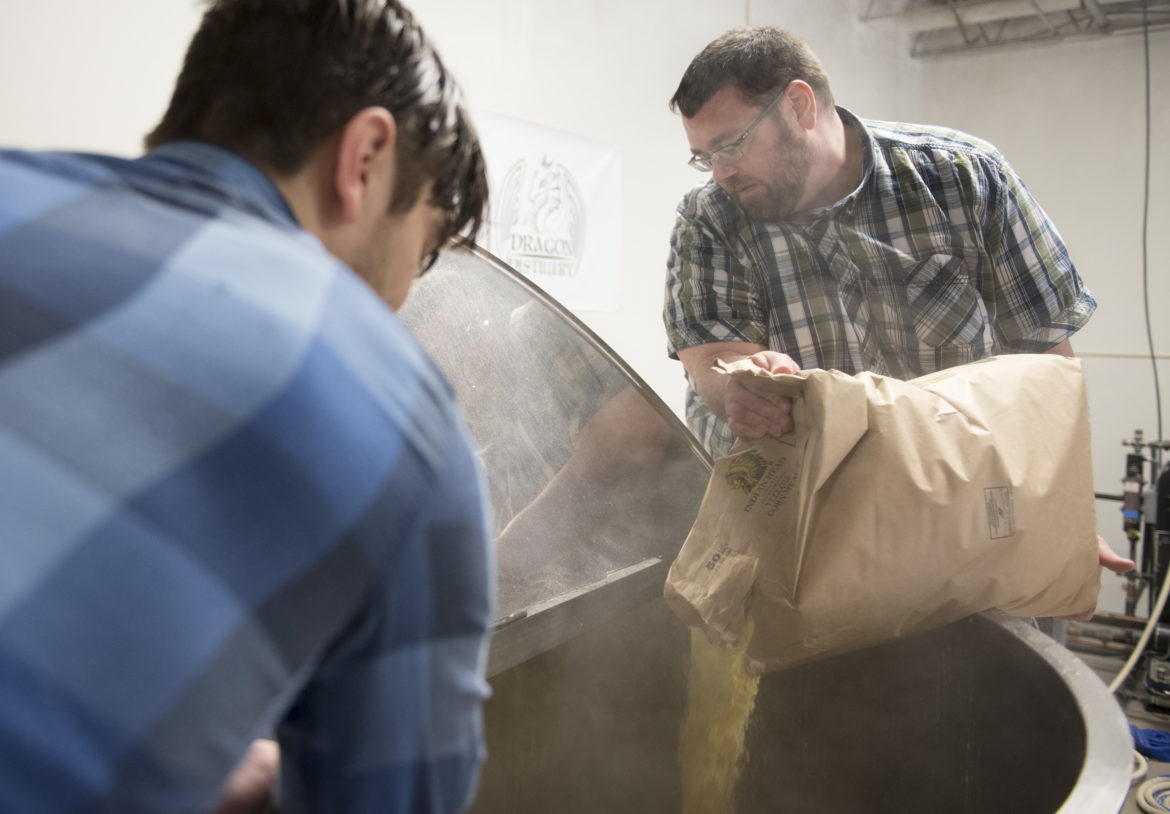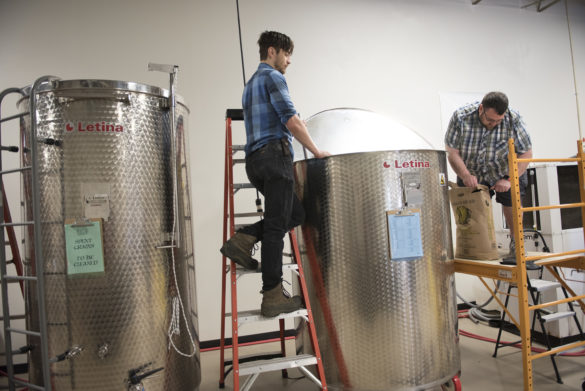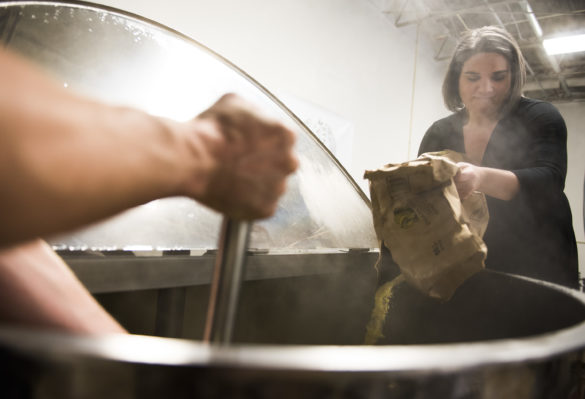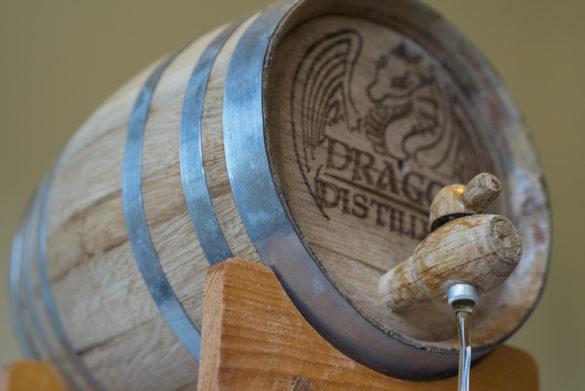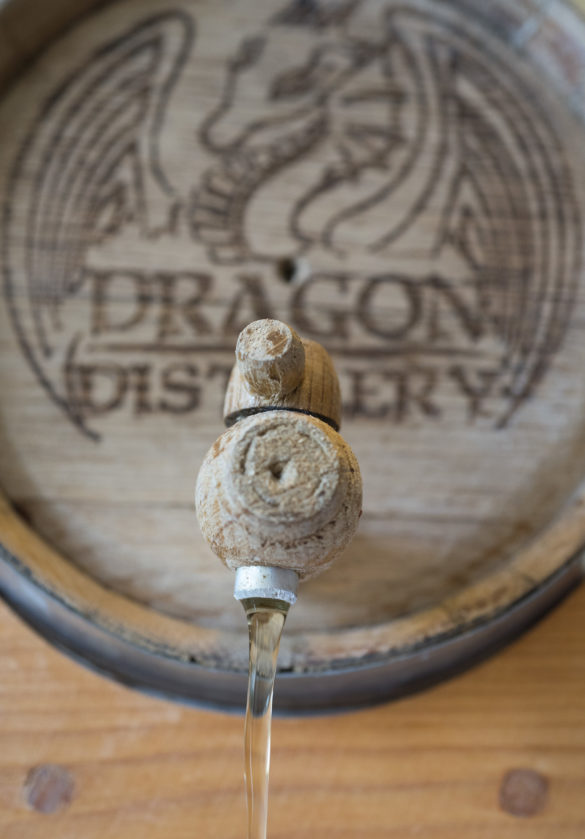BY KATE MASTERS
The mid-Atlantic region is notoriously difficult for growing grapes, but that hasn’t deterred dozens of Maryland winemakers from putting down roots. The secret to a successful bottle? Much of it has to do with the grape varietals that winemakers choose for their vineyards. A varietal wine is one that bears the name of the main grape from which it was made.
Rachel Lipman, the assistant winemaker at Loew Vineyards in Mount Airy, explained that some of the most successful vines in Frederick County are hybrids—grape varietals specifically bred to weather cooler climates and withstand disease. Some classic European vines, including cabernet franc, also thrive here.
Below, we’ve created a guide to some of the most commonly grown grapes in Frederick and Washington counties, from old European varietals to lesser-known hybrids.
Chambourcin
A hybrid grape, chambourcin tends to produce lighter-bodied red wines with higher levels of acidity. A good chambourcin will have bright notes of Bing cherry, Lipman said, with a touch of white pepper on the back palate.
Chambourcin grown locally is usually kept as a fresh wine—one that’s aged for six months or less—and tends to be dry or semi-dry. More simply put, chambourcin wine tends to have little to no residual sugar, and won’t have the sweet notes that some wine drinkers prefer.
Cabernet Franc
Cabernet franc, a beloved French varietal, has the adaptability to withstand Maryland’s varied seasons, Lipman said. That makes it a popular grape at many local vineyards, including Loew.
Cabernet franc is generally a medium-bodied red wine with bright, herbal notes. Most cab franc fans look for at least a touch of green bell pepper, a flavor that’s indicative of the wine, Lipman said. That tasting note comes from pyrazine, a chemical compound found in the grapes.
“To me, cabernet franc is a little bit wiser—it’s a little bit more elegant,” Lipman said. “It usually has a little bit more plum, cherry notes. And there’s the green bell pepper flavor when it’s unripe, and when it’s riper, you get a little bit more of the black pepper.”
Vidal Blanc
Another hybrid, vidal blanc is widely popular and known for its versatility. Producers can use the grapes for ice wines—sweet dessert wines with slightly lower alcohol levels—and in more traditional applications.
In Maryland, vidal blancs are often produced as off-dry whites with dominant floral notes, Lipman said. Vidals will also have a slight citrus flavor and notes of pineapple that vary in strength depending on the sweetness of the wine.
“If it’s done as a dryer wine, I’ll get underripe pineapple, and if it’s a medium-sweet, I’ll get that day-old, more yellow pineapple,” Lipman said. “That’s kind of my indicator.”
Vidal blanc is also commonly used for blending. At Loew, Lipman and her grandparents use it as the base for their fruit wines, and as one of the blends in their dry white.
Barbera
A European varietal, barbera can trace its origins to the Piedmont region of northern Italy. The grapes are becoming increasingly popular among Maryland producers, Lipman said, along with other Italian varieties.
Locally, barbera tends to be oak-aged and produced as a more “serious” wine. It’s lighter in body and color than a cabernet franc, with notes of bright strawberry and dark cherry. Some wine drinkers might also pick up hints of raspberry and spice.
Barbera produced in Maryland also tends to have medium acidity—much less than chambourcin and some other French-American hybrids, Lipman said. It’s a good food-pairing wine and goes well with red meats and heavier dishes.
Viognier
Viognier, a popular grape among Virginia winemakers, is also an up-and-comer in Maryland, Lipman said. A growing number of vineyards are beginning to plant the varietal, and locally made viognier should be an emerging trend over the next few years.
A white wine, Viognier is heavily floral with strong flavors of peach and honeysuckle. A good bottle should be full-bodied and aromatic, with hints of vanilla if the winemaker chose to age it in oak barrels.
Viognier is generally made as a dry wine, but should retain some sweetness thanks to its fruity profile.
“It’s a versatile grape in the fact that it is pretty resilient and produces a nice wine,” she said. “But it’s something that, for some people, is like potpourri. You stick your nose in and you’re kind of overwhelmed with flowers.”

